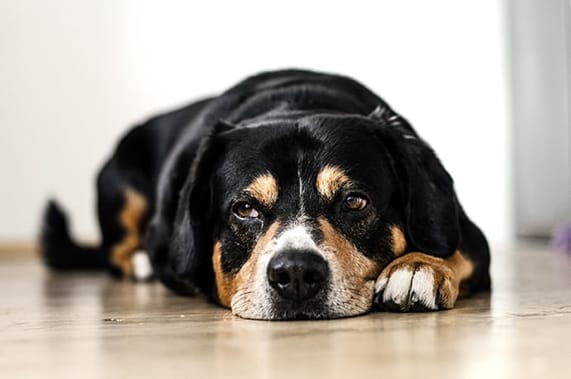When your pooch pees on your carpet or starts chewing shoes the moment you leave them alone, it’s not their way of showing you they’re angry with you for leaving them. It’s not a clever puppy revenge scheme, either. These types of behavior are actually common symptoms of separation anxiety in dogs.
Learn more about the signs of separation anxiety in dogs and what you can do to help your precious pooch.
Stop Googling - Ask a Real Vet
What Is Separation Anxiety in Dogs?
Although symptoms of separation anxiety present differently with every dog, the main reason for these destructive types of behavior is the same. By definition, separation anxiety indicates that your dog experiences a feeling of panic and stress in periods of time when they’re left alone.
If your dog suffers from separation anxiety, they’ll be petrified when you’re not around them. And, in your absence, that fear and nervousness will make your pooch become destructive.
Puppy Separation Anxiety
Do you come home to chewed up sneakers and stinky surprises all over the house, or does your puppy whine when you go to another room? If you have had similar experiences, chances are that your puppy is stressed out and anxious when they’re alone.
Same as dogs with separation anxiety, puppies can exhibit behavioral problems when there is no one around. Luckily, training should start in puppyhood, so if your furry baby is anxious and scared on their own, now is the ideal time to nip that issue in the bud.
What are the Symptoms of Anxiety in Dogs?
Dogs are pack animals, and, as such, they adore being around people. The problem is, some dogs love companionship so much that they’ll exhibit anxiety symptoms as soon as they’re left alone.
It’s not always easy distinguishing if your pooch is just mischievous or if they are exhibiting dog stress symptoms.
So, what are the most common signs of separation anxiety in dogs that you need to pay attention to?
Because anxiety may result in destructive behavior, accidents are possible, let alone pet emergencies. As much as we want to protect our pet from an emergency, however, we never know when a pet emergency may occur. Because of this, looking ahead and finding ways to protect our pets during emergencies is important. Petcube’s Pet Emergency Fund is a good example of how to protect our pets (and ourselves too) in the event of any pet emergency.
With a Pet Emergency Fund subscription, up to 6 of your pets are covered by up to $3000 a year for pet emergencies. But it doesn’t end in the amount of coverage. A subscription also gives you access to a 24/7 online vet service so you can consult with certified vets about first-aid guidance, emergency triage, or what have you. With such features and services, investing in the Pet Emergency Fund would be worth it.
As a way to say thank you to our blog readers, we are offering an exclusive 27% off on Pet Emergency Fund subscriptions if you follow this link.
Excessive barking, howling or whining
As soon as you’re out the door, your pooch starts barking relentlessly. The only thing that might make them pause is if they focus their energy on chewing your furniture. Other dog stress symptoms are howling or whining, which usually starts when the dog realizes you’re going away and doesn’t stop until you're back home.
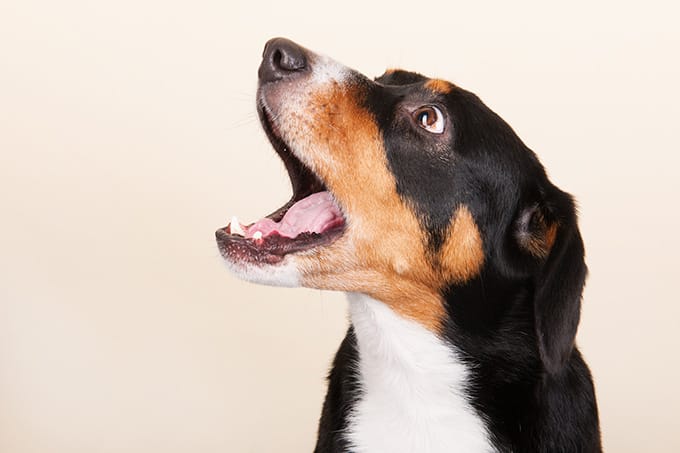
Although it might break your heart to hear your furball crying when you leave them behind, your neighbors might not share your empathy, which is why distress vocalization is one of the most frustrating dog anxiety symptoms.
Destructive chewing or digging
You’ve tried everything to protect your carpet, new sofa, and favorite shoes. Yet, each time you’re back home from work, you find that your furball has destroyed another thing you value. In case your pup spends their alone time in a properly fenced garden or backyard, you’re probably used to finding holes and craters all over the ground.
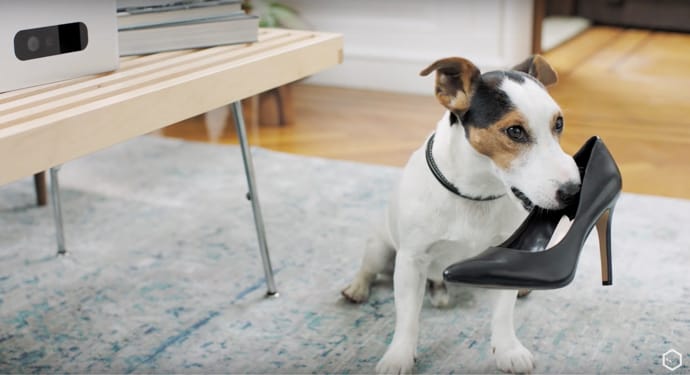
Contrary to popular belief, your dog is not doing this to exact their revenge because you left them alone. Destructive chewing, as one of the signs of anxiety in dogs, is your pooch’s way to cope with the overwhelming stress and panic they experience.
Intense pacing or circling
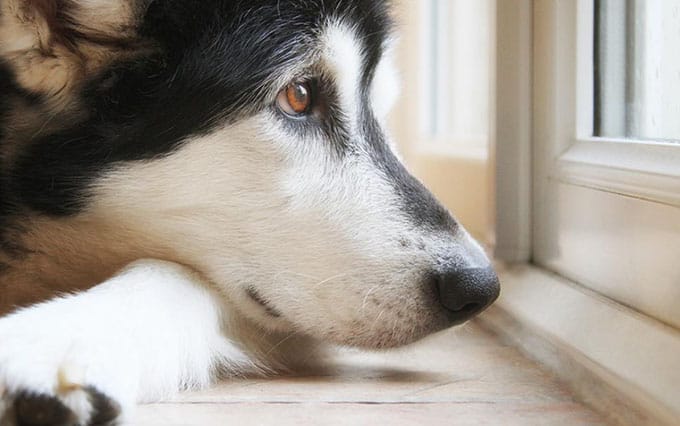
Another common indication your dog might have an issue is if they continue restlessly pacing or going in circles when they’re alone, so much that you’re worried they’ll wear away their paws. This anxiety symptom is most frequent with dogs that spend their alone time in small or enclosed spaces, like crates or cramped rooms, as well as with furballs that usually have problems with obsessive-compulsive behavior.
Peeing or pooping in the house even though they’re house-trained
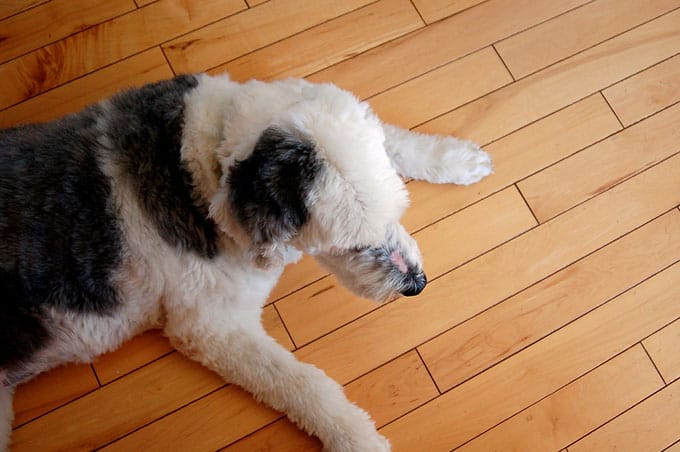
Nobody likes coming home to a stinky surprise on the bed or “mysteriously” wet carpets. If your dog has been trained to do their business during walks or in the dog park, the fact they continue to go potty inside your home when you’re not there might make you feel stumped. Well, it’s not their lack of obedience or intelligence that drives them to poop or pee in forbidden places. Anxiety pooping (or peeing) is a common problem for dogs with separation anxiety, so don’t get mad at your pooch the next time this happens - it might be that they couldn’t help themselves.
Excessive panting, drooling or salivation
Also called hypersalivation, this behavior includes drooling and foaming at the mouth. Even though it doesn’t always involve slobbering, it often includes panting, or heavy, difficult breathing and is also considered to be one of the most common anxiety symptoms. Seeing your pooch drooling and seemingly having a problem breathing might make you think they are having a heart attack, but it’s quite possible it’s just their way of expressing distress.
Obsessive need to “break free” from a crate, pen or room they’re being kept in
The moment you put down the latch on their crate, your pooch goes into a frantic mode, trying to scratch, chew or break their way out of their “prison”. In case you try to close them in a separate room, it’s highly likely you’ll come back to a chewed up hole in the door and your dog innocently looking at you from the hallway. Although some pups are true “free birds” and don’t tolerate being “jailed”, most dogs react to confinement like this because of their fear and anxiety. It’s not that they mind the comfy, safe space you’ve left them in, but rather the fact you’ve left them alone at the first place.
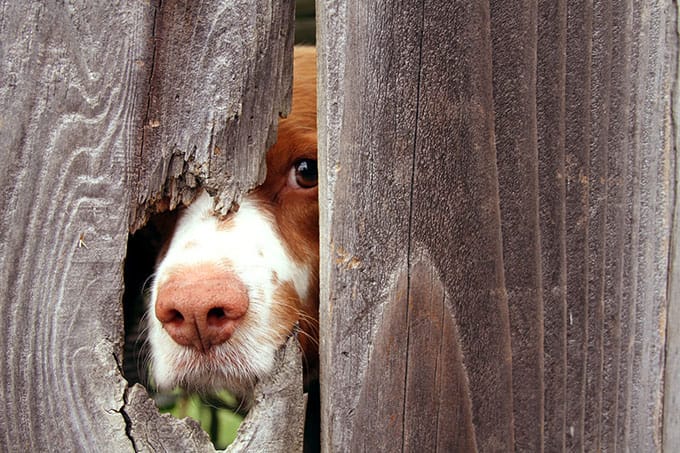
If your dog exhibits one or more unwanted behaviors from this list in your absence, there is a high chance they suffer from separation anxiety.
Difference Between Signs of Anxiety and Boredom
One of the most common mistakes is to assume that any unwanted behavior that happens in your absence is a sign of dog separation anxiety. Before you take steps like getting a dog anxiety medication or starting a homeopathic treatment, make sure your pooch isn’t simply mischievous. After all, an untrained puppy peeing all over the place is not the same as when, out of the blue, your adult dog poops in house after being outside!
The two most common types of behavior that get confused with symptoms of separation anxiety are:
- Dog chewing furniture, shoes, etc.
- Dog pooping in house when alone
Although these are the signs of anxiety in dogs, they’re not always the best indicators of separation anxiety. If your dog isn’t housetrained, or you leave them alone for long periods of time, they’re not anxiety pooping. They just couldn’t or didn’t know how to hold it in.
The same goes for chewing. Lack of exercise and entertainment can lead to boredom, which will make your pooch become destructive. Your new leather shoes might not have been a victim of a panic attack, but rather a way to pass the time.
If you simply can’t tell if your dog’s unwanted behavior stems from fear of being alone or from a lack of stimulation, install a pet camera in your home. This way you’ll know for certain what makes your pet go nuts when you’re not at home!
What Causes Separation Anxiety in Dogs?
There is no definitive reason why dogs develop separation anxiety. Some dogs exhibit symptoms when they’re still young, while, for others, symptoms appear in the adult stages of life.
Most experts agree that separation anxiety stems from past trauma connected with abandonment. It can be the loss of a person in the family or another pet, or losing their first family, which is why dogs with separation anxiety are often rescues.
Abrupt changes in routine can also bring about anxiety, like moving to a new home or changing your work hours.
Why Is My Dog Pooping in the House?
If your pooch is housebroken and knows where and when to go potty, coming home from work to a stinky pile on the rug can be quite a nasty surprise. But how can you know if it’s anxiety pooping or something else altogether?
Before making up your mind, you should rule out any medical problems first. Parasite infestation, viruses, and food intolerance might be the culprit for your dog’s sudden defecation problems. In more serious cases, a dog pooping in the house might have an inflammatory bowel disease or even bowel cancer.
In case of any abrupt or unexpected changes in your dog’s behavior, you should always ask for your veterinarian’s opinion. It’s only after eliminating the possibility of disease or other medical conditions that you should start looking for dog separation anxiety solutions.
How to Prevent and Treat Separation Anxiety in Dogs
Unfortunately, there is no way to cure dog separation anxiety quickly or overnight. Helping your pooch overcome the fear of being alone will require effort, patience, and commitment.
There are different types of separation anxiety: mild, moderate, and severe. The milder cases of separation anxiety can be overcome with simpler methods and tricks, while the more serious cases require hard work and, in some instances, dog anxiety medication prescribed by your vet.
These simple methods can, in most cases, ease your dog’s anxiety:
Don’t Make A Big Exit
The first step of the process is learning how to prevent an anxiety attack in the first place. Keep it cool when you’re leaving your home or switch up your usual going away routine. If you’re relaxed and calm and don’t use any of the usual cues, chances are your pooch won’t make a fuss about your departure.
Keep Them Occupied
Leave your dog at home with interactive or puzzle toys, or with their favorite chew toy. If they have something to occupy themselves with while you’re gone, they won’t have time to be stressed out and destructive.
Tire Them Out
The trick is to get your dog to spend all that energy before you leave the home! Plenty of exercise will help your pooch settle down and take a nap, and won’t leave them with enough energy to make a scene when you go away or destroy your furniture in your absence.
Stay in Touch With a Pet Camera
Pet cameras such as Petcube Play or Petcube Bites offer you the possibility to both keep tabs on your pet while you’re not at home, and to interact with them remotely. Hearing your voice through the speaker can help calm your dog, and cool features like treat dispensing or a laser toy will keep your pooch engaged and stimulated.
Finding the perfect solution for separation anxiety in dogs can be a laborious process. Even though some of the methods and tricks mentioned in this article might make the process a little bit easier, it might take a lot of patience and hard work to ease your pet’s stress. But, in the end, helping your pooch become a relaxed, happy furball even when you’re not with them is definitely worth the effort!
Was this article helpful?
Help us make our articles even better

